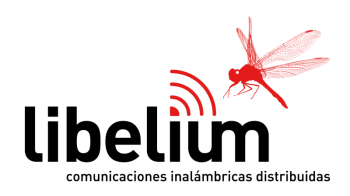Hi all,
at the fantastic WSFII meeting during SAX at guifi.net in Spain we started to specify two wireless hardware devices. There were people from various free wireless network communites from Europe and the US. We had a three hour workshop and tried to define our wish list for cheap free open source software compatible open wireless hardware. Now we are trying to find the manufacturers who is willing to build those devices.
If you have any contacts that could help, please talk to them and show them our results. The company should best sell those products direct to the communites over webshop and only ship the bulk boards in charges of 20,50,100 or more. We think, that’s the best way to make them as cheep as possible.
There are quite a lot of people willing to help in e.g. software/driver-development or hardware-design. I am very positive that sooner or later some manufacturer is going to see their chance in our global movement!
JuergeN
— SCHNIPP —
1. Simple Node
– single wireless a/b/g radio device with support for virtual access points
– single Ethernet port with high tolerance PoE support (4-30V)
– power system must resist reverse polarity
– 4 Mbyte Flash
– 16 Mbyte RAM
– 200 MHz CPU
– serial port
– JTAG interface
– one Antenna plug (reverse SMC) and no explicit need for diversity
– for outdoor usage (which is regarded to be a standard scenario) the
board does not need a box and does not need to be shipped with antenna
and power supply
– power consumption should be as little as possible (solar systems!)
Comment: Finding the consensus on the design for the simple node was
quite easy and did not take very long. It seams that the needs and
wishes of the different groups represented by the attendees are very
similar.
2. Super Node
– two embedded wireless a/b/g radio devices with support for virtual
access points
– two Ethernet ports with standard 802.3af PoE support
– power system must resist reverse polarity
– 8 Mbyte Flash
– 32 Mbyte RAM
– 500 MHz CPU
– two USB 2.0 ports
– two miniPCI slots (both stackable up to 8 cards)
– serial port
– JTAG interface
– two Antenna plugs (reverse SMC) and no explicit need for diversity
– for outdoor usage (which is regarded to be a standard scenario) the
board does not need a box and does not need to be shipped with antennas
and power supply
– power consumption should be as little as possible (solar systems!)
Comment: Finding a compromise on the super node really was a hard time,
because there can be different ways to achieve the same goals. For
example, if wireless USB devices had a better FOSS support, many of the
super nodes could just easily be built without the need for miniPCI.
Also super nodes can be built with simple wireless bridges connected
over ethernet (high power consumption?). But anyway, after many looong
discussions the group had a consensus on the points listed above.
3. wireless USB devices
As already mentioned, super nodes could well be build using wireless USB
devices instead of mini PCI cards (less expensive cabling, less
interference between the devices). But to be able to use them, people
need FOSS drivers for them, which support all wireless modes (managed,
ad-hoc, AccessPoint), and the USB devices should have a reverse SMC
antenna connector.
— SCHNAPP —
http://wiki.freifunk.net/OpenHardware


 Second step is not always necessary, depending of the calculations needed it may be better to make them in receiver computer to save nodes energy.
Second step is not always necessary, depending of the calculations needed it may be better to make them in receiver computer to save nodes energy.
